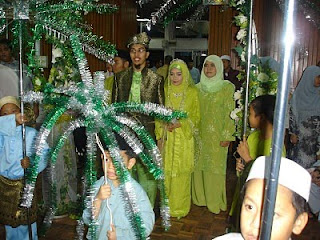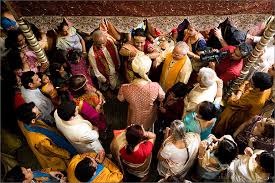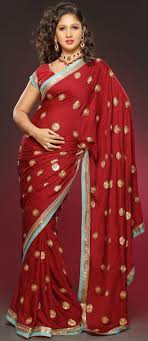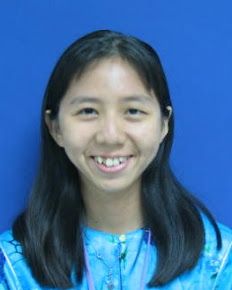Indian Wedding
After discussing about both Malay and Chinese wedding, for sure Indian wedding is the next topic. All can guess, right.  Hopefully, you all can enjoy the reading..
Hopefully, you all can enjoy the reading.. 
Introduction
Indian community is the third largest ethnic group in Malaysia and also one of the people who have contributed towards the formation of a plural society in our country. Like other communities, the Indian community is also rich with features and still maintains their cultural culture until now. A costume practiced by the Indian community has many cultural similarities with the Malay community. This is clearly seen in the aspect of birth and marriage. Like other communities, the Indian community consists of various ethnic groups.
Indian weddings are very bright events, filled with ritual and celebration that continue for several days. They are not small affairs, often with 400-1000 people attending (many of whom are unknown to the bride and groom). Though most marriages are arranged, some couples in urban areas have love marriages. The true Indian wedding is about two families getting wedded socially with much less emphasis on the individuals involved.
Before the wedding day:
Bariksha(merisik)
Bariksha (Var-iksha probably) is when the bride's parents have informally shown intentions that they want a particular groom, and the groom and his family have agreed. In this stage, several aspects need to be considered factors such as ethnicity, sub-ethnic, caste and religion. In addition, other factors such as economic status and social status include aspects such as age, education level, type of work, ethics and morality, looks and family background is also important. Often the information was obtained directly from the parties involved and also indirectly through friends and relatives. Sometimes the middle called tirumana taragaakan assist in this stage. Retracting at the end of this stage is frowned upon but is acceptable.
 Thanks a lot as you spent your precious time to visit our blog. This blog will touch on the marriage decription among all the races in our beloved country, Malaysia. For your information, this blog is authorised under SHE101 project and we're supervised by our lecturer, Dr Yusri bin Yusup.
Thanks a lot as you spent your precious time to visit our blog. This blog will touch on the marriage decription among all the races in our beloved country, Malaysia. For your information, this blog is authorised under SHE101 project and we're supervised by our lecturer, Dr Yusri bin Yusup. One of the reason is this title is so interesting to discuss certainly.(^_^)..In addition, Malaysia consists of various kind of races and our Prime Minister with his trade mark,'ONE MALAYSIA' tends to ensure malaysian are getting along and never feel differ even we're from different races, religion and etc. Based on that, we're decided to focus on marriage as this kind of subject is yet popular among all the races..So, we're really hope all of you can get some knowledges here and can share it also with others...perhaps!Enjoy the facts*_*!!!
One of the reason is this title is so interesting to discuss certainly.(^_^)..In addition, Malaysia consists of various kind of races and our Prime Minister with his trade mark,'ONE MALAYSIA' tends to ensure malaysian are getting along and never feel differ even we're from different races, religion and etc. Based on that, we're decided to focus on marriage as this kind of subject is yet popular among all the races..So, we're really hope all of you can get some knowledges here and can share it also with others...perhaps!Enjoy the facts*_*!!!









.png)























 Happiness sign which in the form of engraving marks on paper or metal fragments will be pasted to the entrance door of the house for the both families and also at the invitation Desk. It is considered the most important decoration in Chinese wedding ceremony. Furthermore, the happiness sign also was pasted at the bridal transport(car). The red envelope or ang pau occurred at the most official Chinese ceremony like the wedding ceremony and many more as it been said to have a good luck at that ceremony.
Happiness sign which in the form of engraving marks on paper or metal fragments will be pasted to the entrance door of the house for the both families and also at the invitation Desk. It is considered the most important decoration in Chinese wedding ceremony. Furthermore, the happiness sign also was pasted at the bridal transport(car). The red envelope or ang pau occurred at the most official Chinese ceremony like the wedding ceremony and many more as it been said to have a good luck at that ceremony.







